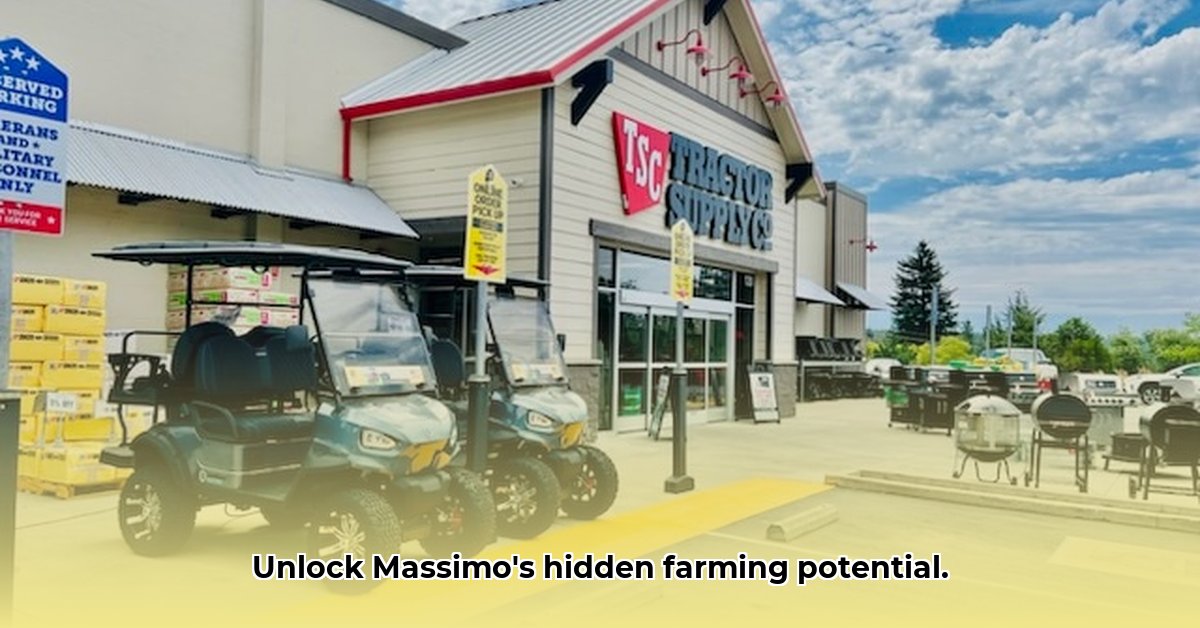
Thinking about sustainable farming practices and seeking efficient, eco-friendly solutions? Tractor Supply's partnership with Massimo ATVs presents an intriguing option for small-scale farmers. This analysis examines the potential benefits and drawbacks of Massimo ATVs for sustainable agriculture, considering market viability, environmental impact, and economic feasibility. We'll also outline actionable recommendations for all stakeholders.
Market Analysis: A Niche Opportunity?
The market for sustainable agriculture is expanding rapidly. Farmers are increasingly focused on preserving soil health, and the lightweight nature of Massimo ATVs offers a potential solution, especially for smaller operations or specialized tasks. Tractor Supply's extensive rural network provides significant market access, placing Massimo ATVs directly in front of potential customers. However, success hinges on successfully demonstrating the ATVs' value proposition for sustainable farming practices beyond their recreational applications. Thorough market research targeting specific customer segments is crucial to ascertain the true demand and potential market share.
Technical Specifications and Capabilities: Farm-Ready?
Massimo offers various ATV models, including the MSA 450 and 760. Key features relevant to sustainable agriculture include four-wheel drive for navigating uneven terrain and load-carrying capacity for transporting supplies or harvested crops. The availability of models with tracks instead of tires significantly reduces ground pressure, potentially minimizing soil compaction. Nevertheless, the overall suitability depends on farm-specific needs. Further development of agricultural-specific attachments and accessories (e.g., specialized spraying equipment) would enhance functionality and broaden the appeal to farmers. Does the current range adequately address the diverse needs of sustainable farming practices?
Sustainability Assessment: Weighing the Environmental Impact
Sustainability requires a comprehensive environmental assessment. While ATVs, especially those with tracks, can potentially mitigate soil compaction, their overall environmental footprint needs evaluation. Fuel efficiency, emissions (both greenhouse gases and particulate matter), and the resource consumption involved in manufacturing all contribute to the overall environmental impact. A complete life cycle assessment, comparing Massimo ATVs to other agricultural equipment (e.g. smaller tractors) is needed to determine their net environmental benefit. How do the emissions of Massimo ATVs compare to other farm vehicles?
Economic Viability: A Cost-Benefit Analysis
The economic viability is crucial. For small-scale farmers, Massimo ATVs may offer a cost-effective alternative to larger tractors for specific tasks. However, larger farms might only benefit from supplementary use. A detailed cost-benefit analysis is necessary, comparing purchase price, fuel consumption, maintenance costs, and operational lifespan against increased productivity and potential labor savings. Will the long-term savings outweigh the initial investment?
Actionable Insights for Stakeholders: Collaboration for Success
To ensure the successful integration of Massimo ATVs into sustainable farming, a concerted effort from all stakeholders is required:
- Massimo Motors: Invest in further market research focused on farmer needs; develop more fuel-efficient and sustainable models (e.g., hybrid systems), and create farm-specific attachments.
- Tractor Supply Co.: Train staff on ATV capabilities and benefits for sustainable farming; expand educational resources for farmers on sustainable agricultural practices and the role of ATVs.
- Small-Scale Farmers: Conduct thorough assessments of soil conditions and farm-specific needs before investing in ATVs. Explore financing options and government incentives.
- Environmental Organizations: Conduct independent studies evaluating ATV environmental impact; advocate for responsible manufacturing and usage; promote sustainable agricultural practices.
Risk Assessment Matrix: A Balanced Perspective
| Technology/Practice | Soil Compaction Risk | Economic Risk | Environmental Risk |
|---|---|---|---|
| Massimo ATVs (tracked) | Low | Medium | Low |
| Massimo ATVs (tires) | Medium | Low | Low |
| Reduced Tillage | Low | Low | Low |
| Controlled Traffic Farming | Low | High | Low |
Conclusion: A Promising, but Uncertain, Path
The potential of Massimo ATVs in sustainable agriculture is promising. However, more research and development are needed to fully understand their environmental impact and economic feasibility. Collaboration among all stakeholders—Massimo, Tractor Supply, farmers, and environmental groups—is essential for responsible integration and widespread adoption. A balanced approach, combining data-driven analysis with careful consideration of potential risks, will pave the way for informed decisions and contribute to a more sustainable agricultural future.